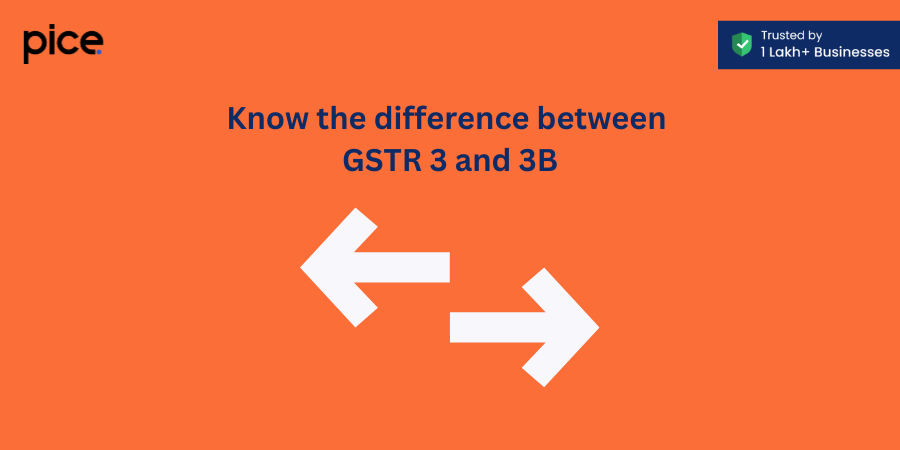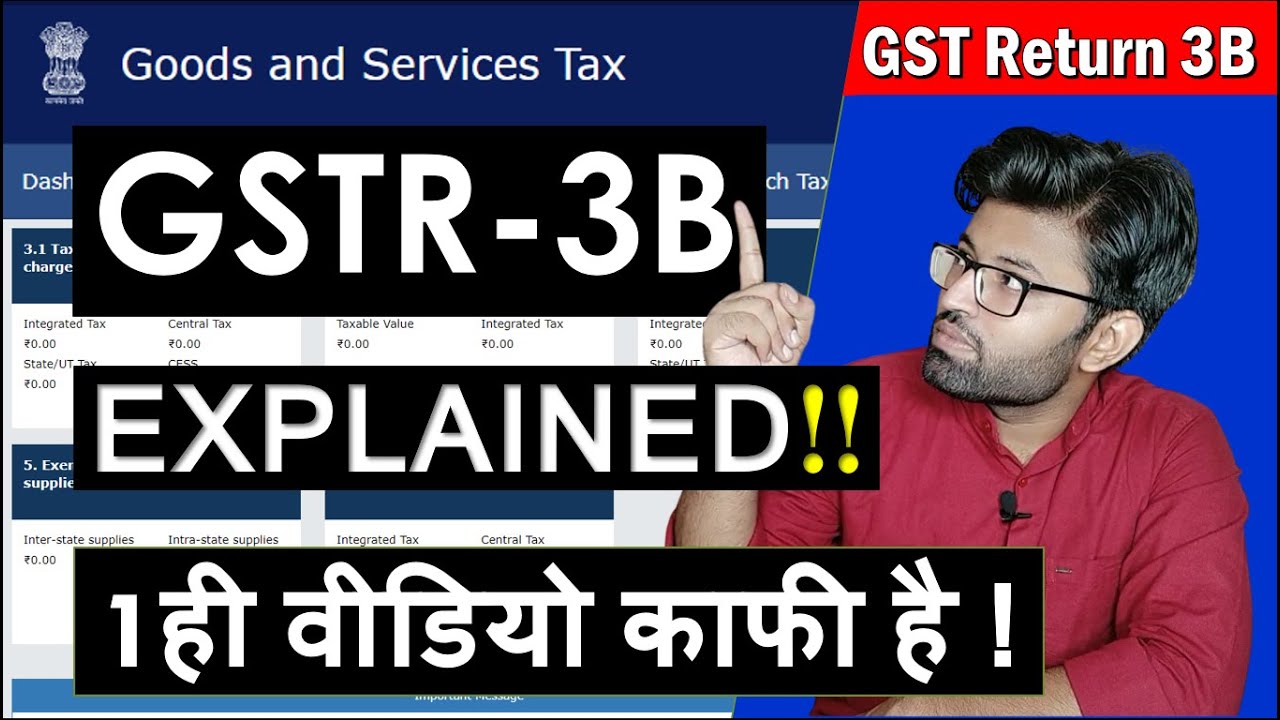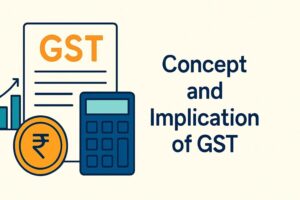Know the difference between GSTR 3 and 3B
- 23 Aug 24
- 12 mins

Know the difference between GSTR 3 and 3B
Key Takeaways
- Filing Frequency: GSTR-3B is filed monthly by all registered taxpayers, while GSTR-3, originally intended for monthly filing, has its implementation deferred.
- Content and Details: GSTR-3 is a detailed return consolidating data from GSTR-1 and GSTR-2, whereas GSTR-3B is a summary return with aggregated sales and purchase data.
- Compliance Requirements: GSTR-3 involves detailed matching and reconciliation of invoices, while GSTR-3B is a self-declared return with less detailed reconciliation.
- Adjustments and Revisions: GSTR-3 allows for adjustments based on GSTR-2A, but GSTR-3B does not have a provision for revision; adjustments are made in subsequent returns.
- Penalties for Late Filing: Both returns attract a penalty of ₹50 per day for late filing, emphasizing the importance of timely compliance.
In India, the Goods and Services Tax (GST) has revolutionized the way businesses handle taxes. Among the various GST return filings, GSTR-3 and GSTR-3B are crucial for maintaining compliance and ensuring smooth tax processes. But what exactly are GSTR-3 and GSTR-3B, and how do they differ? Let's dive into these two forms and understand their significance.

What is GSTR-3?
Definition
GSTR-3 is a monthly return that businesses registered under GST must file. It provides a comprehensive summary of the outward and inward supplies made during the month, along with the tax liability.
Purpose
The primary purpose of GSTR-3 is to consolidate all the details from GSTR-1 (outward supplies) and GSTR-2 (inward supplies) into a single return, which helps in determining the tax liability and the amount of input tax credit (ITC) available.
Key Components of GSTR-3
- Taxable Supplies: Details of all taxable supplies made during the month.
- Output Tax Liability: The total tax liability based on the taxable supplies.
- Input Tax Credit: The amount of ITC available for set-off against the tax liability.
- Payment of Tax: The final amount of tax to be paid after adjusting the ITC.
What is GSTR-3B?
Definition
GSTR-3B is a simplified summary return that GST-registered businesses must file monthly. It is a self-declared return that captures the summary of sales, purchases, and the tax amount to be paid.
Purpose
The purpose of GSTR-3B is to ensure that the government receives a monthly summary of the taxpayer's transactions and the taxes due. It acts as a provisional return until the detailed returns (GSTR-1 and GSTR-2) are filed.
Key Components of GSTR-3B
- Summary of Sales and Purchases: A brief summary of all sales and purchases made during the month.
- Tax Liability: The total tax liability calculated based on the summary of transactions.
- Payment of Tax: The final tax payment to be made after considering the available ITC.
Differences between GSTR-3 and GSTR-3B
| Aspect | GSTR-3 | GSTR-3B |
| Filing Frequency | It was originally intended to be filed monthly, but its implementation has been deferred. | Filed monthly by all registered taxpayers. |
| Content and Details | Detailed return with comprehensive data from GSTR-1 and GSTR-2. | Summary return with aggregated data on sales and purchases. |
| Compliance Requirements | Involves detailed matching and reconciliation of invoices. | Self-declared return with less detailed reconciliation. |
| Adjustments and Revisions | Allows for adjustments based on GSTR-2A. | No provision for revision; adjustments are made in subsequent returns. |
Purpose and Importance of GSTR-3 and GSTR-3B

GSTR-3 is designed as a detailed monthly return that consolidates the data provided in GSTR-1 (sales details) and GSTR-2 (purchase details). Its primary purpose is to offer a comprehensive view of a taxpayer's liabilities and input tax credits.
The importance of GSTR-3 lies in its detailed matching and reconciliation of invoices, ensuring accuracy and reducing discrepancies between sales and purchases. This form also allows for adjustments based on GSTR-2A, providing a mechanism for correcting any mismatches. Although originally intended for monthly filing, its implementation has been deferred.
All registered taxpayers must submit the GSTR-3B monthly as a simplified summary return. The purpose of GSTR-3B is to provide a quick overview of sales, purchases, and tax liabilities, enabling timely tax payments.
Its function in preserving consistent compliance with GST laws emphasizes its significance. Unlike GSTR-3, GSTR-3B is a self-declared summary return requiring less detailed reconciliation, which facilitates easier and quicker filing. While it does not allow for revisions, adjustments can be made in subsequent returns.
Revenue Collection
These returns help the government monitor tax collection and prevent tax evasion.
Filing Process for GSTR-3
Steps Involved:
- Gather Data from GSTR-1 and GSTR-2: The first step is to collect all the necessary sales and purchase details from the GSTR-1 and GSTR-2 forms. GSTR-1 contains the sales data, while GSTR-2 includes the purchase information.
- Reconcile the Data: Once the data is gathered, it must be reconciled to ensure that the sales and purchase figures match. This step is crucial for identifying and correcting any discrepancies.
- Compute the Final Tax Liability: After reconciliation, compute the final tax liability. This involves calculating the total tax due after accounting for input tax credits.
- File the Return on the GST Portal: The final step is to file the GSTR-3 return on the GST portal. Ensure all the details are accurate before submission.
Deadlines:
The deadline for filing GSTR-3 is the 20th of the subsequent month. This means that taxpayers must complete the filing process by the 20th day of the month following the tax period.
Penalties for late filing:
Late filing of GSTR-3 attracts a penalty of ₹50 per day for each day of delay. This penalty is split as ₹25 under CGST (Central Goods and Services Tax) and ₹25 under SGST (State Goods and Services Tax). Filing within the time period is essential to avoid these penalties.
In case the GST dues are not paid within the due date, interest at 18% per annum is payable on the amount of outstanding tax to be paid.
Filing Process for GSTR-3B
Steps Involved:
- Summarize the Monthly Transactions: Begin by summarizing all the sales and purchase transactions for the month. This includes compiling the total taxable value and the corresponding tax amounts.
- Compute the Tax Liability: Calculate the tax liability for the month by considering the output tax (on sales) and adjusting it with the input tax credit (on purchases).
- Make the tax payment: Pay the computed tax liability using the available input tax credit and any additional cash payment if necessary. Ensure that the payment is made before filing the return to avoid penalties.
- File the Return on the GST Portal: Finally, log in to the GST portal and file the GSTR-3B return. Verify all the details and submit the return before the deadline.
Deadlines:
The deadline for filing GSTR-3B is the 20th of the subsequent month. For instance, the 20th of August is the deadline for filing the July return.
Penalties for Late Filing:
Late filing of GSTR-3B attracts a penalty of ₹50 per day for each day of delay. This penalty is divided into ₹25 for CGST (Central Goods and Services Tax) and ₹25 for SGST (State Goods and Services Tax). Additionally, there might be interest charges on the outstanding tax amount.
Common Challenges and Solutions
Error-Free GST Filings
- Ensuring error-free GST filings is crucial to avoid penalties and ensure accurate input tax credit (ITC) claims. Mistakes in filing can lead to compliance issues, incorrect tax liability calculations, and delays in ITC claims.
Automation for Error Reduction
- Using automated tools and software can significantly reduce errors in GST filings. Automation helps in summarizing monthly transactions, computing tax liability accurately, and reconciling data from GSTR-1 and GSTR-2.
- Automated solutions also assist in maintaining accurate records, generating e-way bills, and providing a complete supply chain solution. This reduces manual intervention and minimizes the risk of human error.
Compliance Ratings
- Maintaining a good compliance rating is important for businesses to build trust and credibility with stakeholders, including suppliers, customers, and tax authorities. A high compliance rating indicates timely and accurate GST filings, which is essential for business compliance and can positively impact business operations and relationships.
- Using an ERP e-TDS return filing solution can further enhance compliance by streamlining the process and ensuring timely submissions. This approach not only helps in avoiding late fee penalties but also optimizes ITC, supports efficient vendor payments, and facilitates effortless collaboration with vendors.
By leveraging a comprehensive ecosystem for process automation, businesses can ensure their GST filings are accurate, timely, and compliant with the regulations, thereby maintaining a good compliance rating and avoiding potential penalties.
Impact on Businesses

Small Businesses
- For small businesses, GSTR-3B simplifies the filing process. Small businesses can concentrate more on their operations thanks to the self-declared summary return, rather than having to deal with complicated compliance requirements.
- The auto-populated return feature in GSTR-3B helps reduce the time and effort required for filing, making it easier for small businesses to maintain their GST compliance without needing extensive accounting resources.
Large Enterprises
- Large enterprises benefit significantly from the detailed data provided in GSTR-3. The comprehensive nature of GSTR-3, which includes detailed sales and purchase data, aids in better financial transaction planning and tax management. This detailed return helps in accurate GST liability calculation, ensuring that large enterprises can optimize their input tax credit claims.
By leveraging hyper-automation and advanced ERP e-TDS return filing solutions, large enterprises can handle the complex compliance requirements efficiently, ensuring timely and accurate filings.
Sector-Specific Impacts
Different sectors may have specific requirements and challenges when filing GSTR-3 and GSTR-3B. For instance, businesses involved in inter-state sales need to carefully track their GST liability to ensure compliance. The consumer products sector, with its varied taxes and complex supply chains, benefits from automated tools that help in accurate data reconciliation and compliance.
The ability to optimise ITC and maintain detailed records of sales, including invoice matching, is crucial for sectors with high transaction volumes. Additionally, maintaining good compliance ratings and staying up-to-date with business compliance is essential for all sectors to build trust and credibility.
Using comprehensive reporting dashboards and retrieval services can help businesses in various sectors to streamline their GST filings and ensure they meet all mandatory compliance requirements. By addressing sector-specific challenges and leveraging process automation, businesses can enhance their compliance status and avoid penalties for late filing.
Reconciliation of GSTR-3 and GSTR-3B
Process Overview:
Reconciliation between GSTR-3 and GSTR-3B involves matching the details of sales and purchases reported in both returns to ensure consistency and accuracy. This process helps in identifying discrepancies and ensuring that the tax liability and input tax credit (ITC) claims are accurate.
Steps Involved:
- Data Compilation:
- GSTR-3B: Begin by compiling the summary data of monthly transactions, including sales, purchases, and tax liabilities.
- GSTR-3: Gather detailed data from GSTR-1 (sales) and GSTR-2 (purchases) to prepare for reconciliation.
- Invoice Matching:
- Match the invoice details reported in GSTR-1 and GSTR-2 with the summarized data in GSTR-3B. This includes checking invoice numbers, dates, taxable values, and tax amounts.
- Tax Payable Reconciliation:
- Compare the tax payable reported in GSTR-3B with the computed tax liability in GSTR-3. Ensure that the figures match, and adjust for any discrepancies found.
- ITC Claims Verification:
- Verify the ITC claims made in GSTR-3B against the purchase details in GSTR-2. Ensure that the ITC claimed is eligible and accurately reported.
- Adjustment Entries:
- Make the necessary adjustment entries for any mismatches identified during the reconciliation process. This may involve rectifying incorrect invoice details, correcting tax amounts, or adjusting ITC claims.
- Compliance Check:
- Perform a final compliance check to ensure that all details are accurate and consistent across GSTR-3 and GSTR-3B. This includes verifying that the return filing period and tax period are correctly reported.
- Filing of Returns:
- Once reconciliation is complete and all discrepancies are resolved, file the GSTR-3 return on the GST portal. Ensure that the data matches with GSTR-3B to avoid penalties and maintain good compliance ratings.
Importance of Reconciliation:
Reconciliation of GSTR-3 and GSTR-3B is crucial for businesses to maintain accurate tax records, optimize ITC claims, and avoid penalties. It ensures that all transactions are correctly reported and helps in building trust and credibility with tax authorities and stakeholders.
Conclusion
In conclusion, for businesses of all sizes, ensuring compliance with GST regulations through GSTR-3 and GSTR-3B filings is essential. Input Service Distributors optimize ITC claims and manage tax liabilities efficiently. Leveraging hyper-automation and product suites, businesses streamline tax payable calculations and reconcile sales invoices, reducing mismatches and enhancing direct tax compliance.
Advanced database access tools and secretarial compliance are crucial for the accurate filing of GST returns. Public discussions and expertise from tax professionals keep businesses updated on compliance requirements. The GST Portal’s comprehensive dashboard helps track filing status and manage GST transactions seamlessly.
These strategies help businesses avoid penalties, maintain compliance, and build trust and credibility in the market.
💡Learn more about how our Pice app can help you make all your important business payments, like supplier and vendor payments, rent, GST, & utility, from one single dashboard with your credit card. Request a demo now.




















